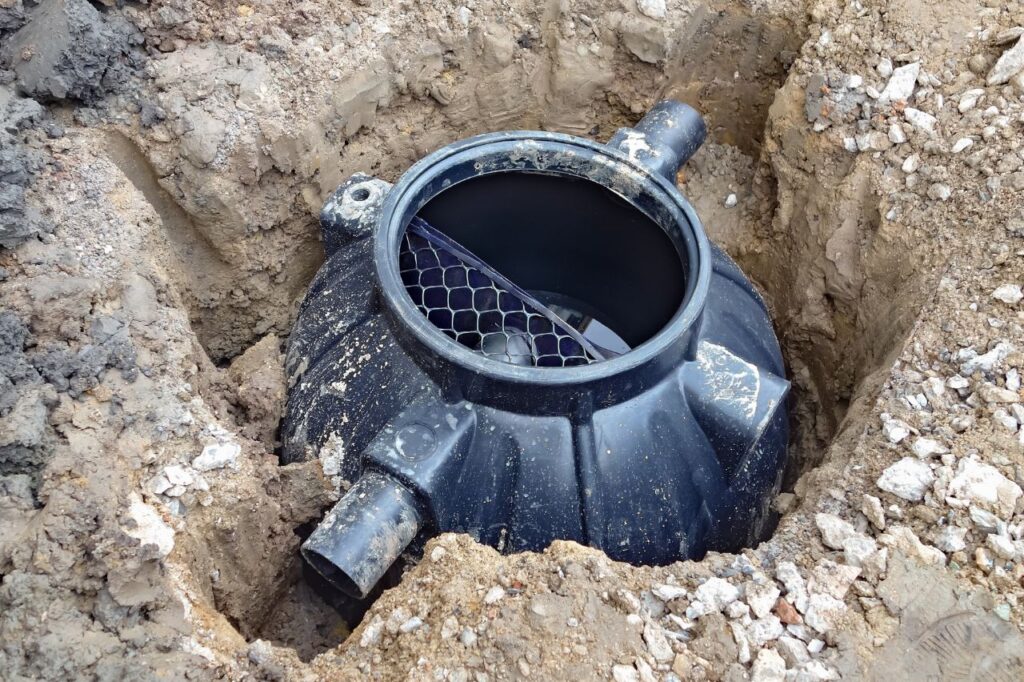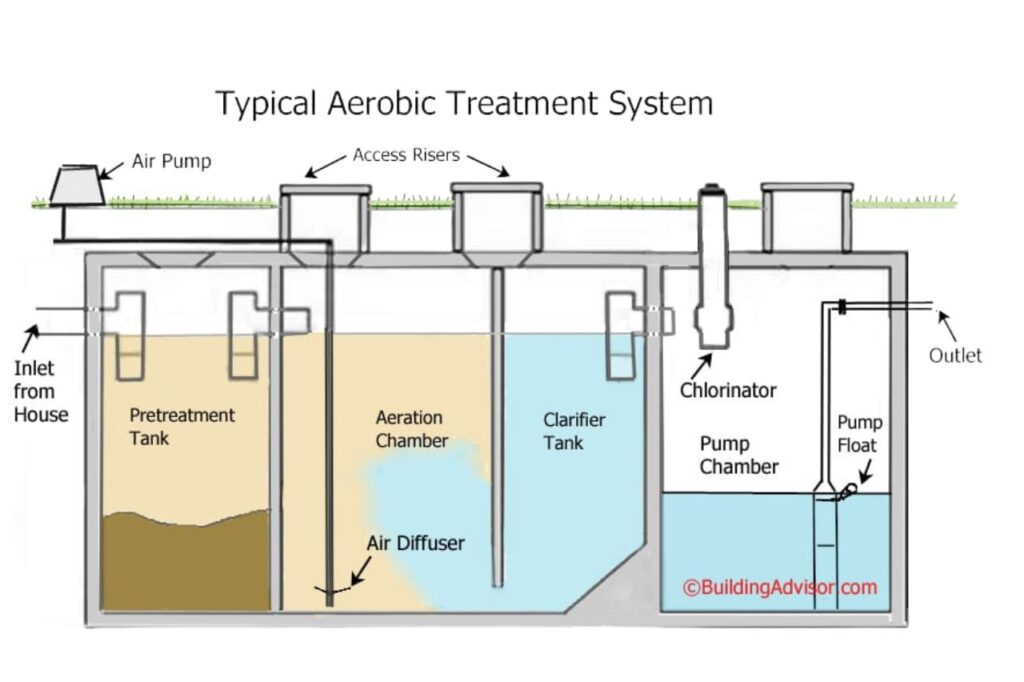An aerobic septic system is a great option for homeowners who are concerned about environmental impact. They break down wastewater quickly, and their effluent can be discharged in environmentally sensitive areas where traditional septic systems would not work well.
But aerobic septic systems need regular maintenance to keep them working properly. That includes inspection and pumping.
Aerobic Septic cost
The cost of an aerobic septic system varies depending on several factors. For example, how much space you have available for the tank, the type of septic tank you choose, and the size of the drain field needed.
The overall cost of an aerobic septic system is higher than conventional or gravity septic systems. However, they offer a faster and more thorough treatment of wastewater, so it’s worth the extra investment for those with the proper site conditions.
These systems are typically installed in areas with high water tables, poor soil, or a high bedrock level. They are also used in areas where there is limited yard space for a traditional septic system.
Compared to other types of septic tanks, an aerobic septic tank is lighter and less likely to crack or break under the pressure of shifting ground. It does, however, require regular cleanings and inspections.
Installation costs for an aerobic septic tank can range from $3,900 to $15,000 on average, depending on where you live and the size of your home. These prices include labor, excavation, and drain field testing.
If you’re interested in installing an aerobic septic system, consider hiring a licensed septic installer who uses trusted third-party reviews to determine their qualifications and quality of work. This includes ensuring that they have the necessary insurance and licensing to complete the job.
Once the project is underway, it’s important to schedule regular maintenance checks and repairs with a septic system specialist. This will help keep your aerobic septic tank in good shape and avoid costly repairs.
One of the best ways to do this is by having a septic tank riser installed, which allows you to access your septic tank from the ground. It will give your septic team easy access to the tank should it ever need repairs.
The riser can be made from polyethylene or concrete. A concrete riser is generally a bit heavier and more difficult to install than a plastic one, but it will last longer and be easier to clean.
There are many factors that contribute to the final septic system cost, so it’s important to consider all of them. A good contractor will take the time to assess your property and determine which type of septic system is best for you. They will be able to recommend the most cost-effective solution for your property, and they’ll have the knowledge and expertise to make it happen.
Aerobic Septic Efficiency
Compared to conventional systems, aerobic septic systems are more effective in treating wastewater. This is because aerobic bacteria thrive in a system that introduces oxygen into the waste. They break down solids more efficiently, so the wastewater flows out of an aerobic septic system much cleaner than that from an anaerobic system.
A typical septic tank for an aerobic system is similar to one used by a standard septic system, but it has several additional components. The first is the trash tank, which catches plastic objects and other solids that sink to the bottom. This is followed by an aeration chamber, which supplies oxygen to allow aerobic bacteria to live. The final step is a disinfectant chamber, which removes microbes that may cause disease.
Another component of an aerobic septic system is the absorption field. This part of the septic system collects partially treated wastewater from the septic tank and distributes it to the soil for further treatment. The septic drain field needs to be permeable and not saturated, and it must not be blocked by restrictive horizons (bedrock) that can deter the absorption of wastewater.
The septic drain field also needs to be space-efficient. Aerobic systems usually require smaller drain fields than anaerobic systems, which means they will need to be built in less land area. They can also be more effective on properties with poor soil quality, which is ideal for property owners who don’t have the space for a conventional septic tank.
It is important to monitor an aerobic septic system regularly and inspect it frequently for any signs of problems. This will help you avoid costly repairs down the road.
To ensure proper operation, you should check the air pressure in the aeration chambers and inspect the submersible pump. If the air pressure is low or the pump is not working properly, call the septic experts for assistance.
As an added safety measure, the aeration chambers should be located at least 10 feet above the ground. If the aeration chambers are too low or the submersible pump is not working properly, it could lead to sewage backups.

Aerobic Septic Environmental impact
Aerobic septic systems break down waste faster than conventional septic tanks and can be pumped less often. This allows your system to last longer and prevent functionality issues in the future.
Unlike other septic systems, aerobic systems can be used on all types of land and are not restricted to properties with high groundwater. They also are more energy efficient, which means they use fewer chemicals to treat wastewater.
One of the most important environmental benefits of an aerobic septic system is its ability to reduce the amount of pollutants that get into the groundwater. This reduces the chances of contaminating surface water and can be especially beneficial in areas where there is a high risk of water pollution from agricultural runoff.
A traditional septic system relies on bacteria to break down solid waste in the septic tank. However, this process is time-consuming.
An aerobic septic system, on the other hand, uses oxygen-rich bacterial environments to digest sewage in an aerobic treatment unit (ATU). This process is far more effective but requires more costs.
Once the wastewater reaches an ATU, it goes through a pre-treatment stage where the solids are separated from the liquids. Then, the liquids are pumped into an aeration chamber where air is injected into them. This step supports the growth of aerobic bacteria that will break down the solids in the liquids.
Then, it is treated by a series of steps that will separate out the remaining waste and then discharged to a drain field. This will be either a sand filter, absorption field or evapotranspiration bed.
Another benefit of an aerobic septic system is that it recycles your water and waste. This eliminates the need to pump your septic tank and can save you money over time.
To ensure that your septic system is functioning properly, it needs to be regularly inspected and pumped. If the system is not pumped frequently, it can become overwhelmed with solids and force them into the drain field.
Some things you can do to protect your septic system and the environment are to avoid pouring toxic chemicals down the drain, dispose of all garbage disposal units properly, and use biodegradable laundry products. This will help the good bacteria that live in your septic tank to thrive and break down the solids, leaving behind clean wastewater.

Aerobic Septic Installation
When you are building or renovating your home, you will need to consider the installation of a septic system. If you don’t have one, your waste will remain in the soil and can contaminate the surrounding area.
Septic systems come in a variety of designs, depending on your site’s environment and local regulations. Some of the most common types include conventional septic systems and aerobic systems.
Conventional septic systems are less complex than aerobic systems. In this type of septic system, solid and liquid waste enter the tank and settle at the bottom, creating a layer of sludge. Oxygen-loving bacteria break down the sludge, producing wastewater. Sometimes the wastewater passes through another treatment tank before it reaches the drain field.
An aerobic septic system, on the other hand, requires three tanks to treat waste before it reaches your drain field. In addition to the tank, the system includes an aerator that moves oxygen bubbles through the waste to allow aerobic bacteria to consume it.
The wastewater is then fed into a disinfectant chamber where UV light, bleach or chlorine can be used to kill bacteria and other pathogens. This prevents odors from coming up in your yard and ensures the wastewater can be safely drained.
Aerobic septic systems are also more environmentally friendly than traditional septic systems. They use less energy and require fewer chemicals. They also produce a cleaner effluent that can be recycled to water your lawn.
Some aerobic septic systems also feature an alarm system that sounds when the sewage level rises and needs to be drained. This will alert you to any problems with the system and will help you avoid extensive septic repairs.
Other features of an aerobic septic system include multiple smaller tanks, which are more space-efficient than conventional septic tanks. They also give you a lot of flexibility in terms of placement.
If you are planning on installing an aerobic septic system, it is important to hire a professional. This is because the system can be complex, and the septic tanks need to be installed properly.

